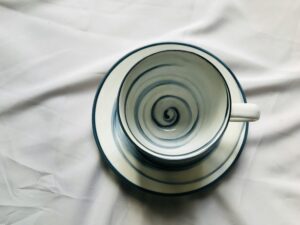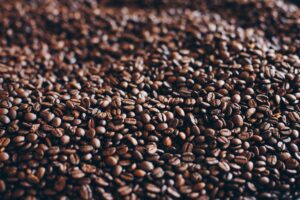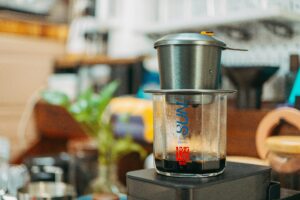In a world filled with high-tech espresso machines and instant brews, the French press remains a timeless favorite among coffee lovers. Known for its rich, full-bodied flavor and straightforward method, the French press offers one of the most satisfying ways to enjoy coffee at home.
Table of Contents
In 2025, more people are rediscovering this classic brewing tool, drawn by its simplicity, affordability, and ability to highlight the natural oils and textures in quality beans. Whether you’re new to home brewing or refining your technique, this guide will walk you through every step to create the perfect cup of French press coffee.
Why Choose the French Press?
The French press, also known as a press pot or cafetière, has been a staple in kitchens since the early 20th century. Unlike drip machines or espresso makers, it requires no paper filters or complicated setup. The result? A rich, aromatic cup of coffee that maintains the oils and body often lost in other methods.
Coffee brewed with a French press has a deeper mouthfeel and stronger flavor, making it a favorite among those who enjoy bold, immersive coffee experiences.
What You Need to Brew
Perfecting French press coffee starts with choosing the right tools and ingredients. While the setup is simple, using high-quality components makes a significant difference.
Equipment Checklist
- A French press (standard size: 1 liter or 34 oz)
- Burr grinder (for consistent, coarse grind)
- Kettle (preferably with temperature control)
- Digital kitchen scale (for accuracy)
- Timer or stopwatch
- Stirring spoon (non-metallic to protect the glass)
Coffee and Water
Use freshly roasted, whole beans. Aim for single-origin coffee with notes you enjoy—nutty, chocolatey, fruity, or floral. Choose filtered or spring water to avoid mineral interference or off-flavors.
Step-by-Step French Press Brewing Guide
Brewing with a French press doesn’t take long—about 10 minutes total—but each step matters. Follow this method to ensure consistency and clarity in your cup.
Step 1: Measure Your Coffee and Water
The golden ratio for French press coffee is 1:15—one gram of coffee for every 15 grams (or ml) of water. A common starting point for a 1-liter French press is 60 grams of coffee to 900 grams of water.
Weighing your coffee ensures precision. Skip the scoops and use a digital scale for accuracy.
Step 2: Grind Your Beans Coarse
Grind size is crucial. A coarse, even grind is ideal for the French press, resembling sea salt or breadcrumbs. Too fine, and you’ll end up with over-extraction and a muddy, bitter cup. Too coarse, and your brew will taste weak and underdeveloped.
Using a burr grinder allows for consistency and avoids overheating the beans during grinding.
Step 3: Heat the Water
Bring your water to a temperature between 195°F and 205°F (90°C to 96°C). If you don’t have a thermometer or gooseneck kettle, boil the water and let it sit for 30 seconds.
Using water that’s too hot can scorch the grounds, while cooler water won’t extract enough flavor.
Step 4: Add Grounds to the French Press
Place your freshly ground coffee in the empty French press. Shake gently to level the bed for even saturation during the next step.
Step 5: Start the Bloom
Pour just enough hot water to saturate the grounds—about twice the weight of the coffee. For 60 grams of coffee, pour about 120 grams of water. Stir gently to ensure all grounds are wet.
Let the coffee bloom for 30–45 seconds. This allows gases (like CO₂) to escape, which improves the overall extraction and flavor.
Step 6: Pour the Remaining Water
After the bloom, slowly pour the remaining water until you reach your target weight—900 grams for a full brew. Ensure all grounds are fully submerged.
Avoid stirring too aggressively after this stage. Let the coffee steep undisturbed to develop its full flavor.
Step 7: Steep for 4 Minutes
Place the lid on the French press with the plunger pulled up. Set a timer for 4 minutes—this is the sweet spot for balance. A shorter brew can taste sour or weak; longer than 5 minutes can result in bitterness.
During this time, the coffee extracts fully, absorbing the water and releasing oils that give French press coffee its signature body.
Step 8: Break the Crust and Skim
Once the time is up, remove the lid and gently break the crust on the surface with a spoon. This helps release trapped aromas and gases. Skim off the remaining foam or floating grounds for a cleaner cup.
This step is optional, but it’s commonly used by pro baristas to refine the flavor and reduce sediment.
Step 9: Plunge Gently
Place the lid back on and slowly press the plunger down. Steady pressure helps avoid stirring up sediment. If it resists, your grind may be too fine.
Avoid forcing it down quickly—it can over-agitate the grounds and cloud your coffee.
Step 10: Serve Immediately
Pour your coffee into cups or a serving carafe right away. Letting it sit in the French press can lead to over-extraction and bitterness.
Enjoy it black or add your preferred milk or sweetener. The French press pairs well with creamier dairy or oat-based milks due to its rich texture.
Flavor Tips for the Best Brew
Perfecting your French press technique involves small adjustments based on taste. Here are a few tips to take your coffee to the next level.
Use Fresh, Whole Beans
Buy your beans whole and grind them just before brewing. Coffee begins to lose its flavor and aroma minutes after grinding.
Try Different Origins
Experiment with single-origin beans from regions like Ethiopia, Colombia, or Sumatra. Each brings unique notes that shine in French press brewing.
Adjust for Strength
If your coffee tastes too strong or too weak, adjust the coffee-to-water ratio slightly. Try a 1:14 or 1:16 ratio depending on your taste preferences.
Preheat Your French Press
Pour hot water into the French press before you begin brewing, then discard it. This keeps the brewing temperature stable and avoids heat loss.
Common Mistakes to Avoid
Even though the French press is a forgiving method, small missteps can impact flavor.
Grinding Too Fine
This leads to bitterness and a silty texture. Always use a coarse grind for clean flavor and easy plunging.
Leaving Coffee in the Press
Once brewed, always decant the coffee. Leaving it in contact with the grounds will lead to bitterness and over-extraction.
Using Old Coffee
Stale beans lack aroma and produce flat-tasting coffee. Use beans within 2–3 weeks of roast date for best results.
Cleaning and Maintenance
A clean French press is essential for great coffee. Residue from old brews can leave behind bitter flavors and oils.
After each use, disassemble the plunger and rinse all parts thoroughly with warm water. For deep cleaning, use a mild detergent and a soft sponge. Let the parts air dry completely before reassembling.
In 2025, many French press models now come with dishwasher-safe components, making daily maintenance even easier.
Why the French Press Is Still Worth It in 2025
Despite the rise of automatic machines and high-end espresso gear, the French press continues to win hearts. It combines tradition with tactile satisfaction and offers an unmatched balance of flavor, body, and ease.
The process itself is almost meditative—grinding, pouring, waiting, plunging. Each step invites you to slow down, connect with your coffee, and enjoy it with intention.
Final Thoughts
The perfect French press coffee is more than just a drink—it’s an experience. By focusing on quality beans, water precision, and technique, you can consistently brew coffee that’s bold, nuanced, and deeply satisfying.
Whether you’re starting your day or unwinding with an afternoon cup, the French press brings flavor and ritual to your coffee routine in the most rewarding way.






